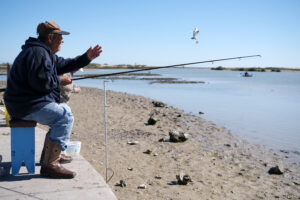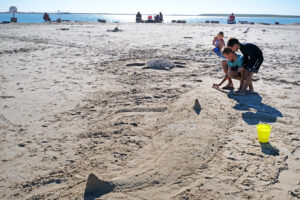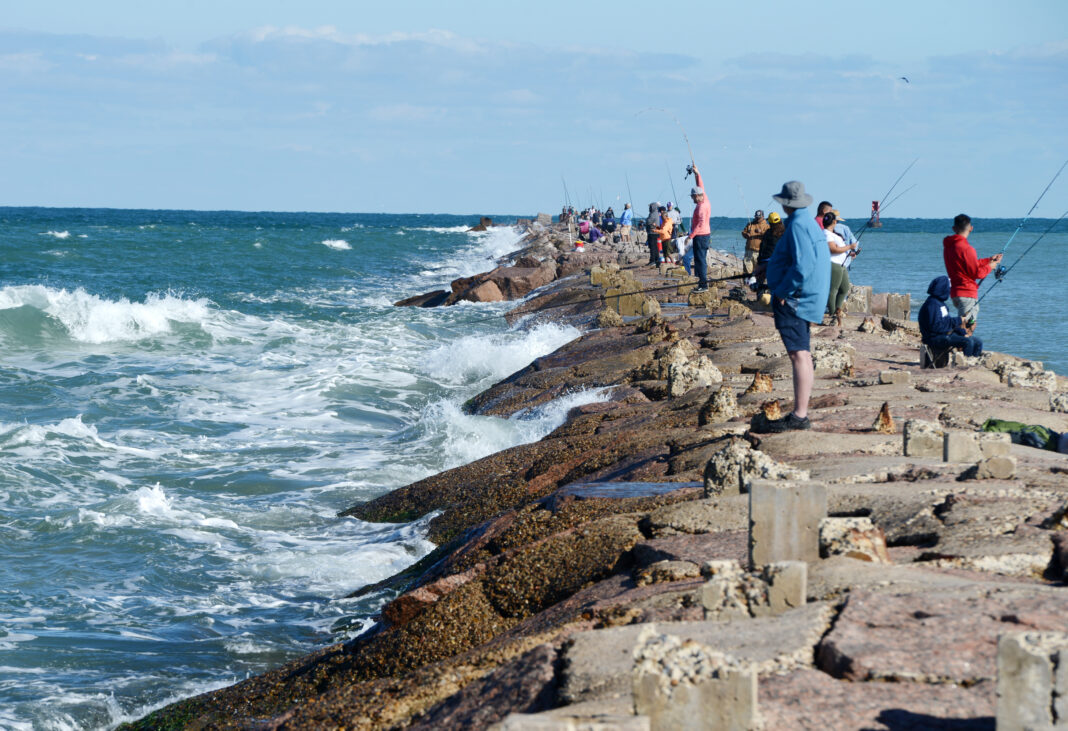Nobody really expects a white Christmas in the Rio Grande Valley.

The last time it happened was in 2004, and it hadn’t occurred for 150 years before that. Still, is a little long-sleeve weather on the big day too much to ask? Yes, it is. In fact, there’s the potential for record breaking heat over Christmas weekend in parts of the Valley.
That’s according to Tim Speece, a meteorologist with the National Weather Service Brownsville/Rio Grande Valley station.
“It’s not going to be very Christmas-like at all,” he said.
At least it won’t be raining, Speece said, noting that rain-free conditions are predicted through the holiday weekend into early next week. In other words, it will be a perfect weekend for outdoor activities that do not involve sledding or snowman construction.
“Basically temperatures are just going to be steadily warming up,” he said. “By (today) we’ll be looking at high temperatures ranging in the 70s to the lower 80s across deep South Texas.”
By Christmas Eve we’ll be looking at highs in the low to mid-80s, Speece said.
“Those hot temperatures are just going to continue into Christmas Day,” he said. “We’ll be looking at highs ranging from the upper 70s to near 80 at the coastline to actually near 90 in like Zapata County.”
Expect lows in the upper 50s to mid-60s on Christmas Eve morning and even warmer lows, in the mid- to upper 60s, on Christmas morning, Speece said.
This Christmastime is forecast to be even warmer than last year, Speece said, noting that the high on Christmas Eve 2020 was 71 and the low was 34. This year’s non-Christmas-like weather is brought to you by a high-pressure system over Texas that will likely persist through the end of the year, in turn caused by the return of the La Niña climate pattern in the Pacific Ocean.
The phenomenon causes colder-than-normal ocean temperatures and can affect weather worldwide, and it’s because of La Niña that meteorologists over the last few months have been predicting a warmer and drier winter than normal.

“The typical situation is whenever we get one of those events heading into the winter months, basically it tends to limit the number of cold fronts we get pushing down into the Valley,” Speece said. “Basically our three-month outlook … looks like above-normal temperatures expected through that period and below-normal rainfall. We still may get the occasional cold front that will come through and drop down temperatures a little bit.”
The temperature records that may be matched or surpassed this Christmas weekend were set between 2005 and 2016. On Dec. 26, 2016, for example, the Valley saw a high of 84 degrees.
The good news is that recent cold fronts like the one that swept through the Valley last weekend have brought enough rain to put a serious dent in the drought, at least in the Valley, which is relatively soggy compared to the rest of the state, he said.
“Toward the end of this year we’ve gotten some pretty good rainfall, which has eliminated the drought pretty much for the Valley, but we’ll have to watch out for (drought) potentially returning as we head into the spring and summer of next year,” Speece said.
“Once you get up into the Central Texas, West Texas, North Texas areas, because of that La Niña event ongoing they’re looking for either the drought conditions to persist there or possibly expand out more to the east.”
Meanwhile, enjoy the spring-like weather this Christmas.
“It’s going to be basically shorts and T-shirt weather,” Speece said.





